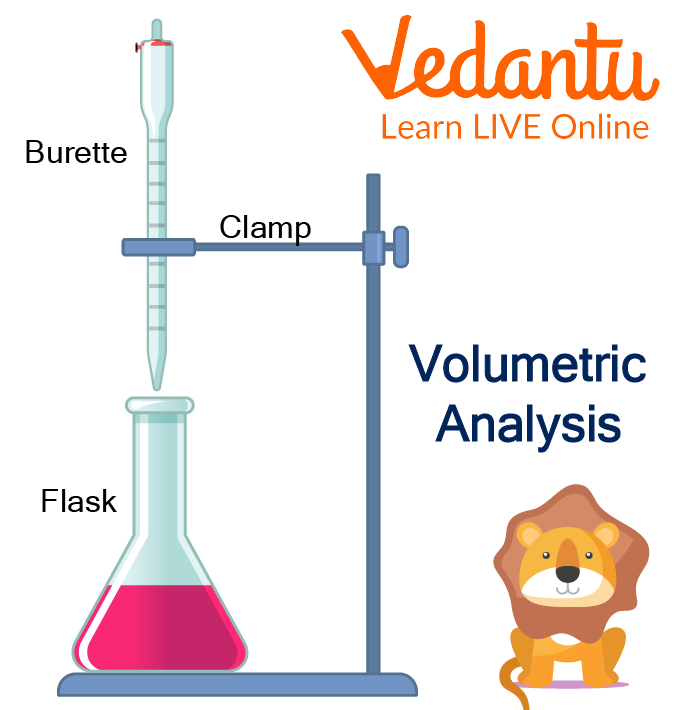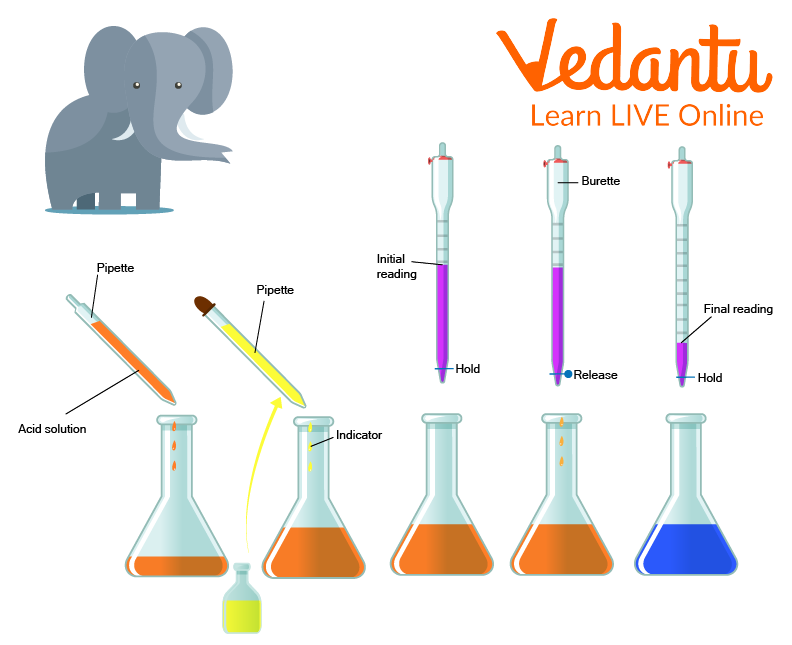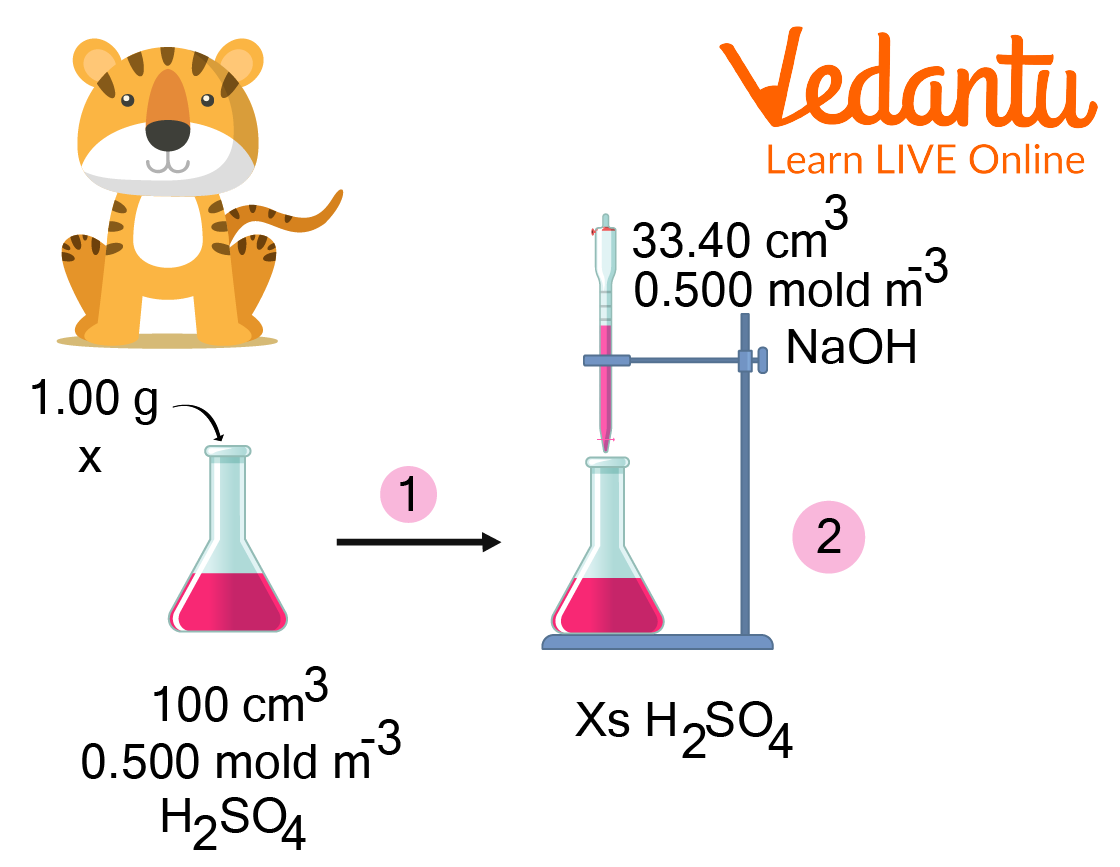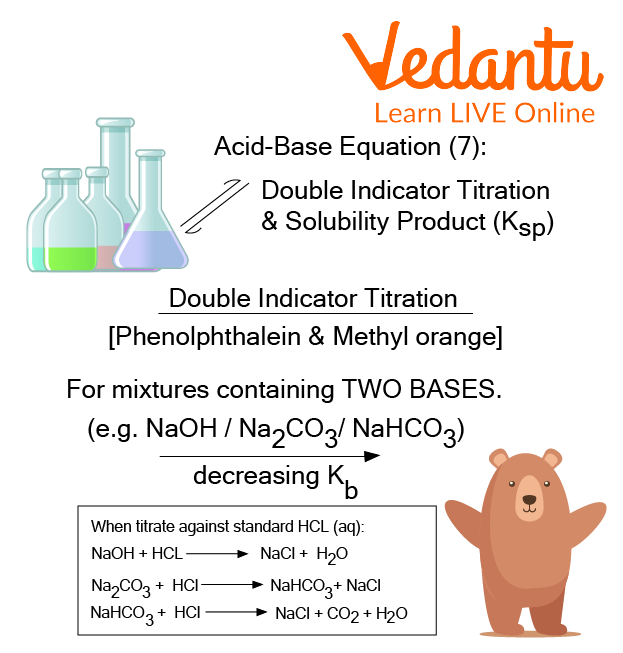




Why Is Volumetric Analysis Essential in Chemistry?
The phrase “volumetric analysis” is mostly used in Chemistry. It is used for various purposes by students, researchers, and scientists. Volumetric analysis is an analytical method where the concentration of any substance in a solution is estimated by adding the same number of equivalents.
There are various uses of volumetric analysis, especially when we deal with chemicals. The equivalents are added to another substance that is present in a solution known as concentration. The whole process is called or known as titration. Further in this article, we will talk about what is volumetric analysis, the principles of volumetric analysis, and much more.
What is Volumetric Analysis?
In simple terms, volumetric analysis is the quantitative analysis of chemicals. The analysis here is determined by measuring the volume that the substance occupies. The volume of the other substance combines with the first in its known proportions. This is known as titrimetric analysis.

Volumetric Analysis
Interestingly, there are three types of volumetric analysis or titration. The three types of titration are the following:-
Simple Titration
Back Titration
Double Titration
Simple Titration
Simple titration is one of the common chemical analyses. In this, the quantity of some constituents of any sample is determined by adding a measured sample. The added substance must be exactly measured with respect to the known quantity of another substance to which the desired constituent will react.

Simple Titration
Back Titration
The name itself suggests that a titration or an analysis is done backwards. Here the titration is done in a reverse method. Interestingly, a known standard reagent is added to the chemical solution instead of titrating the original sample chemical. In fact, the excess chemical solution is then titrated.

Back Titration
Double Titration
In this type of titration, two reagents are used to determine the concentration or result of a solution. The first chemical solution is used to standardize the second reagent. Further, the second reagent is used to determine the concentration of the third unknown chemical solution.

Double Titration
Principles of Volumetric Analysis
Every chemical analysis has its principle which needs to be followed. If these basic principles are not followed, then the final result might differ. Researchers study these things by looking at the principle of the chemical that they are using. The basic principles of volumetric analysis are as follows :-
The solution to be tested or analysed should have an unknown amount of chemicals.
The volumes for these solutions must be measured by titration, which will further complete the reaction between the solution and reagent.
The reagent of the unknown solution should react with a chemical of an unknown amount but in the presence of an indicator. This indicator should be phenolphthalein to show the end-point.
The volume and analysis of the reagent should be used in the titration to show the exact amount of reagent and solution.
The mole fraction of the equation determines the volume of the unknown solution.
Apparatus Used in Volumetric Analysis
Every industry must have these instruments to do the volumetric analysis. The fundamental instruments must be there to do the process correctly. The most common apparatus used in this process is the burette. It is a laboratory apparatus that is used for quantitative chemical analysis.
Some other apparatus used for this analysis are the following:-
Pipette
Burette
Volumetric flask
Conical flask
Measuring cylinder
These are the basic apparatus that needs to be used while doing this process. Using other apparatus will surely give a different result.
Uses of Volumetric Analysis
The basic use of volumetric analysis is done by researchers or chemists. This analysis process is used by high school students to college chemistry lab students. Other than these, they are highly used in various industries around the world. To come up with a new product or innovation, this analysis becomes quite important for many industries.
This analysis process is used to neutralise the sample of vegetable oil. Scientists try to know how much base they need to add to neutralise the entire amount of vegetable oil. On the other hand, they are highly used in the petrochemical and food industries.
How is Volumetric Analysis used in Industry?
Many industries worldwide use this analysis process to manufacture or innovate a product. It is not only used in the manufacturing industries, but they are highly used in the food industry as well. In fact, the wine industry uses this process to find out sulphur dioxide to control microbial growth.
Some industries where volumetric analysis is used are the following:-
Wine industry
Food industry
Cosmetic industry
Pharmaceutical industry
Biodiesel manufacturing
Acid rain analysis
Summary
In this article, we have learned that the chemical world is quite interesting and confusing at the same time. Every result needs to be tested, researched, and analysed. There are thousands of analysis processes in the chemical world, and this is one of them. We also learned that chemical analysis must be done using the proper types of equipment and in a laboratory only.
Volumetric analysis plays a significant role in determining the amount of unknown substance present and is used in numerous industries like the wine industry, food industry, cosmetic industry, and pharmaceutical industry.
FAQs on Uses of Volumetric Analysis Explained for Students
1. What are the different types of volumetric methods in the chemical world?
Volumetric has a long list of methods, and some of them are the following:-
Simple titration
Iodometry
Iodimetry
Acidified K2Cr2O7
2. What is a pipette used for?
Pipette is a testing apparatus mostly found in a chemical lab. This is used to measure out or transfer small quantities of liquid.
3. What are the three types of pipettes found in a chemical lab?
The three types of pipettes or the most common pipettes found are the following:-
Open-end pipettes
Aspirating pipettes
Bacteriological pipettes









